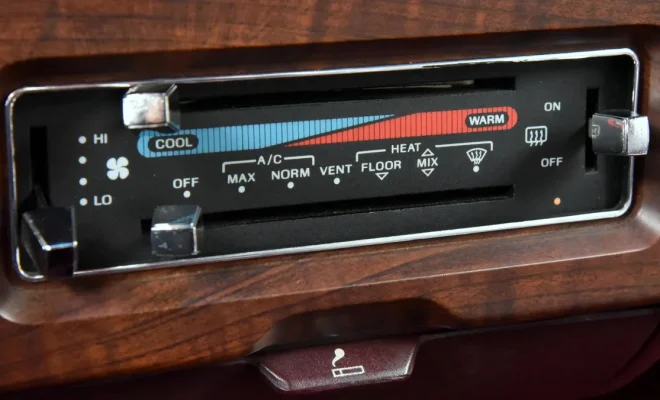How to understand your car’s climate controls

Modern vehicles offer a wide variety of features aimed at ensuring driver and passenger comfort, and one such technology is the climate control system. Climate controls in your car help you maintain the perfect temperature and air quality. However, understanding these systems and using them effectively can be confusing for some. This article will explain the different elements of your car’s climate controls and how to use them efficiently.
1. Temperature Control:
The most basic function of any climate control system is setting the desired temperature within your vehicle. You can control the temperature using a digital interface or a knob that allows you to either increase or decrease the desired temperature inside your car.
2. Fan Speed:
Once you have set the desired temperature, you can adjust the fan speed to circulate air throughout your cabin. Typically, your car will have several fan speeds to choose from, ranging from low to high.
3. Directional Controls:
Directional controls enable you to choose where the airflow is concentrated within your vehicle. With these controls, you can direct air towards the dashboard vents, floor vents, or a combination of both.
4. Recirculation Function:
The recirculation function recycles interior air rather than drawing in fresh exterior air. This feature is useful for avoiding odors or pollution from outside while also helping maintain a consistent cabin temperature faster.
5. Defrost/Defogging Functions:
When condensation or frost forms on your windshield, it can hinder visibility while driving. Most cars come equipped with front and rear defrosting functions that direct warm air towards windshields and windows to eliminate condensation build-up.
6. Heated Seats and Steering Wheel:
Some vehicles feature heated seats and steering wheels to keep drivers and passengers cozy during cold weather conditions. If your car has these options, you’ll typically find buttons either on the climate control panel or nearby on the dashboard.
7. Air Conditioning (AC) and Heating:
Your car’s air conditioning and heating systems help keep you cool or warm, depending on the circumstances. The AC button activates the air conditioning system, while heating is achieved by adjusting the temperature controls.
8. Automatic Climate Control:
Some vehicles are equipped with automatic climate control systems which enable the car to maintain a preset temperature within the cabin without any intervention from the driver. By selecting “auto” on your climate control panel, you activate this feature.
Understanding your car’s climate controls is essential for maintaining a comfortable environment inside your vehicle. By familiarizing yourself with each function, you can ensure that your driving experience remains pleasant regardless of external conditions.



